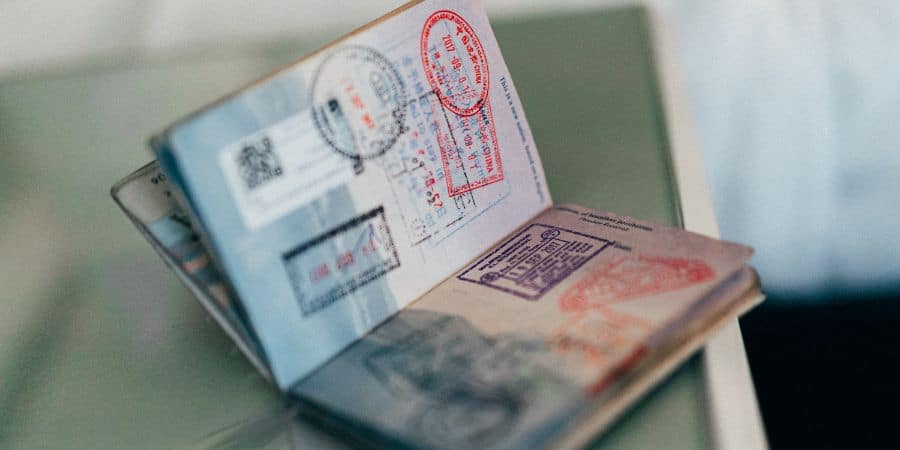Losing your shot at a dream job because of visa restrictions hurts, especially when new rules make the process even harder or more expensive. That’s the reality many skilled workers are facing as major destinations like the U.S. tighten their entry routes.
But for those still determined to build an international career, Europe might be the next best bet. Several EU countries now offer relatively cheap and straightforward work visa options, especially for professionals with skills in demand.
This guide looks at some of the easiest and most affordable EU countries to get a work visa in right now.
What counts as a cheap Work Visa in the EU?
In the EU, visa costs aren’t trivial, but “cheap” depends on who’s paying — the worker or the employer.
For individual applicants, government fees alone range from €75 in Germany and €99 in France to around €285 in the Netherlands. By that measure, anything under €100 is cheap, since most EU work visas sit above that point.
For employers, the calculation shifts. Sponsorship often comes with residency permits, insurance, and legal compliance costs, which can push the total expense per hire well beyond the basic visa fee. In countries like the Netherlands or Belgium, processing for highly skilled migrants is more expensive and time-intensive, making €75–€100 look negligible in comparison.
So in practice:
- To an individual worker, “cheap” usually means a visa under €100.
- To an employer, “cheap” means a visa process that avoids high sponsorship or compliance costs, since those can run into the thousands even if the visa itself is low-fee.
For this list, though, “cheap” means under around $500. That figure covers the main visa application and basic fees, without factoring in extras like legal support, agency charges, or employer sponsorship costs.
Which European countries have the cheapest work visas right now?
Below are 9 cheapest EU countries to secure a work visa in 2025:
TL;DR
Note: Many of these countries also offer additional visa options such as job seeker, seasonal, or entrepreneur permits. The listed programs are the most cost-effective and widely used routes for skilled professionals in 2025.
Spain
Spain’s Digital Nomad Visa is one of the cheapest work visas in the EU, allowing non-EU professionals to live in Spain while working remotely for companies based abroad. It’s valid for one year and can be renewed for up to five years, offering a clear path to permanent residency. The visa fee is about €80, and applicants can benefit from Spain’s non-resident tax rate of 24% on income up to €600,000 a year.
To qualify, applicants must earn at least €2,763 per month, show proof of remote employment or freelance contracts, and have health insurance and a clean criminal record. At least 80% of their income must come from outside Spain, and they must have worked with their current employer or clients for a minimum of three months. Their employer or business must also have been operating for at least a year. The application can be filed from the applicant’s home country or while in Spain on a tourist visa.
Poland
A D-type national visa in Poland allows stays longer than 90 days, often tied to employment or other purposes. Because Poland also issues seasonal work visas/permits (Type S) for up to 9 months in a calendar year, many workers use that route, especially in sectors like agriculture, tourism, and horticulture. Your employer must file a contract with a Polish entity.
As of June 1, 2024, Poland raised its national visa (D-type) fee to €135.
For the D-visa, you’ll need a valid employment contract, proof of accommodation, health insurance (min. €30,000 coverage), proof of finances, and other documents.
Processing typically takes 15 calendar days. In complex cases, it may be extended. Since Poland adjusted its national visa fees recently, using outdated lower visa cost estimates will mislead readers.
Also worth noting: Poland is tightening visa scrutiny following a cash-for-visa scandal, meaning requirements and checks may become stricter.
Finland
Finland offers a strong mix of stability and opportunity. With a high quality of life, demand for tech and specialist roles, and clean public systems, it’s a serious contender for professionals. But getting there comes with rules: non-EU/EEA nationals need a permit to work legally.
Some short jobs or tasks might be visa-exempt, but for most full-time roles, you need a residence permit for an employed person, specialist permit, EU Blue Card, or entrepreneur/residence-based route. Finnish or Swedish language skills can help in certain sectors, especially outside larger cities.
Germany
Germany has one of Europe’s strongest economies. It offers high salaries, broad social benefits, and demand in sectors like engineering, IT, healthcare, and manufacturing. Getting a recognised professional job there can unlock paths to permanent residency and citizenship.
To qualify, you need:
- A valid job offer from a German employer (in a role that matches your skills)
- Credentials that are recognised or comparable to German standards
- Meeting minimum salary thresholds (for example, under Germany’s Skilled Immigration Act, many roles require a gross annual salary of €43,470 or above in 2025)
- Proof that you can financially sustain yourself
- Sometimes language skills, depending on the job
- For highly skilled roles, you may apply via the EU Blue Card route or similar provisions
Germany’s visa system is fairly mature. Once you hold a residence permit tied to employment, you can often renew it, bring family, or later apply for permanent settlement if you meet certain criteria.
Sweden
Sweden offers a high standard of living, strong worker protections, generous parental leave, and solid job security. To work there as a non-EU national, you need a valid employment contract, proof of qualifications, and a salary level that meets legal thresholds. Employers must often advertise jobs within the EU/EEA before hiring non-EU nationals.
The salary requirement is tied to what’s called the “good living” standard: your wage must be at least 80% of Sweden’s median salary, currently SEK 29,680/month. The permit application fee is around SEK 2,200 for a general work permit. There’s also a Job Seeker Visa option. It allows qualified applicants to stay in Sweden (without a job offer) for 3 to 9 months while they search for work.
Netherlands
The Netherlands Single Permit combines both a residence and work permit, allowing non-EU nationals to live and work in the country. It’s usually arranged by the employer, who must show that no suitable worker was available in the Netherlands or the EU.
Depending on the job type—such as regular paid work, seasonal labour, or work experience—the employer applies through the Immigration and Naturalisation Service (IND), often with advice from the Employee Insurance Agency (UWV). Once approved, the holder can live and work in the Netherlands under the conditions stated on their permit.
France
France might not be the cheapest place to live, but its Talent Passport makes it one of the most accessible for skilled professionals. The visa covers engineers, researchers, entrepreneurs, and other qualified workers who already have a job offer or contract with a French company. It allows you to live and work in France for up to four years and can include your family under the same permit.
Applicants need a recognised degree (at least a master’s level), proof of employment, and a salary that meets the national threshold. The total cost, including visa fees and taxes, is around €325, which is moderate compared to similar long-term permits across Europe.
France’s biggest draw is its strong job market in technology, fashion, and engineering, along with generous benefits like paid holidays, accessible healthcare, and a healthy work-life balance.
Austria
Austria uses a points-based “Red-White-Red Card” system for non-EU nationals who want to live and work there. It’s valid for 24 months and ties you to a particular employer (or role) in your application. You can qualify as one of several types: very highly qualified workers, skilled workers in shortage occupations, key workers, graduates from Austrian institutions, self-employed key workers, or start-up founders.
To qualify, you must meet criteria such as:
- Having a fixed income (enough to cover living costs)
- Health insurance valid in Austria
- Proof of adequate accommodation
Austria updates a list of shortage occupations each year. In 2025, there are 81 nationwide and 66 regional shortage jobs. Some in-demand roles include power engineers, mechanical engineers, telecommunications technicians, public health nurses, and cost accountants. The Red-White-Red Card is Austria’s main route for skilled third-country nationals hoping to settle or work there over the medium term.
Luxembourg
Luxembourg might be small, but it’s one of Europe’s wealthiest and most welcoming for skilled professionals. In 2025, the country lowered its EU Blue Card salary threshold to €58,968 and now accepts three years of work experience in IT or management instead of a degree.
Applications are fully digital via Guichet.lu, and processing times are faster than ever. If you already hold a Blue Card from another EU country, you can now work in Luxembourg for up to 90 days without extra permits or relocate permanently with little hassle.
Visa fees remain modest—about €70 for temporary authorisation and €80 for a Type D long-stay visa—making Luxembourg one of the most affordable entry points for skilled professionals and freelancers eyeing the EU job market.
Before you apply
Even the cheapest EU work visas require one key thing: a valid job offer or sponsorship from an employer in your destination country. Once that’s secured, your visa process becomes straightforward.
But remember, immigration rules can change fast. Salary thresholds, eligible occupations, and document requirements are often updated yearly. Always confirm details on the official immigration portal of the country you’re applying to before submitting any documents.
Get passive updates on African tech & startups
View and choose the stories to interact with on our WhatsApp Channel
Explore





